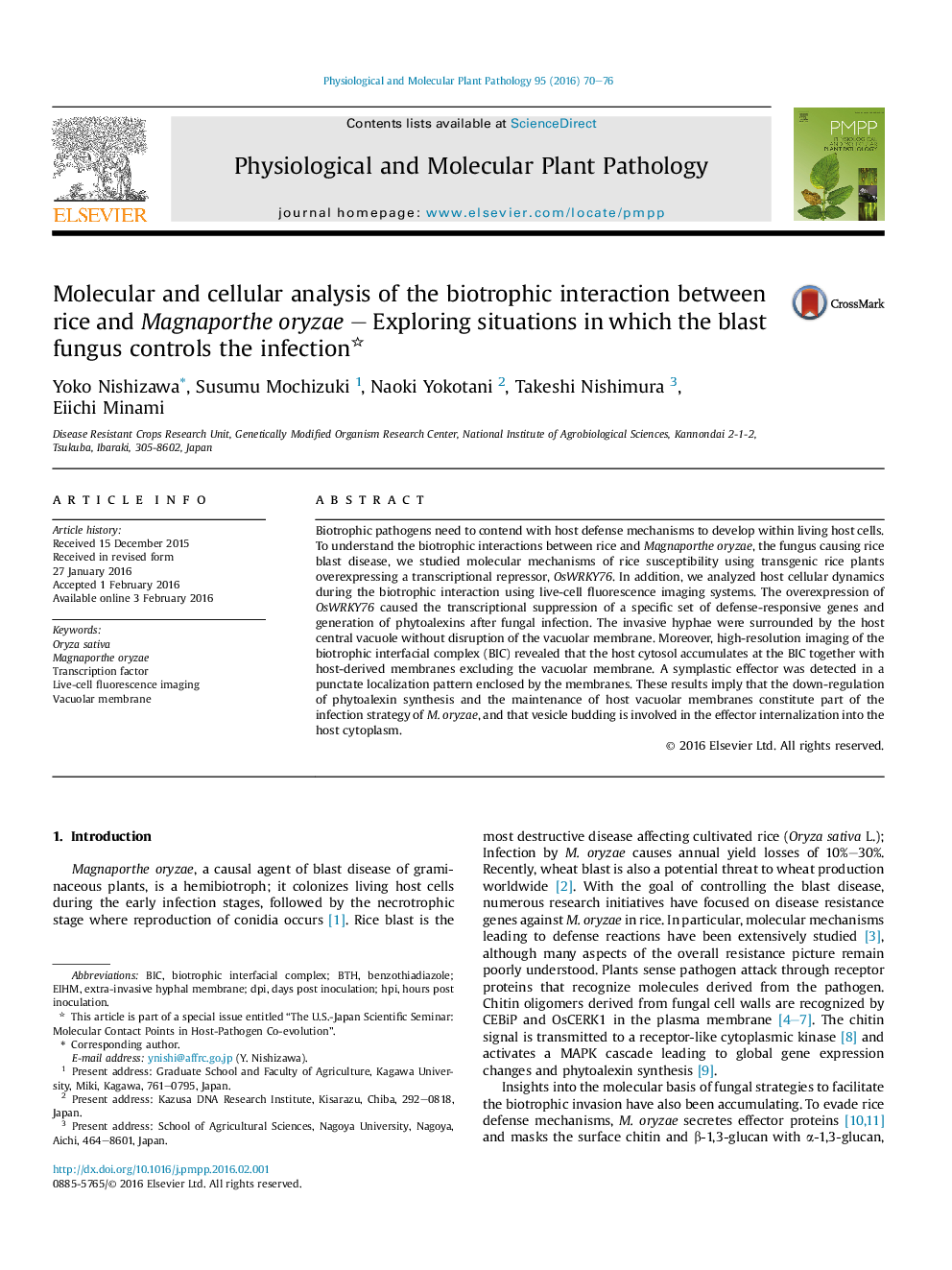| Article ID | Journal | Published Year | Pages | File Type |
|---|---|---|---|---|
| 2836182 | Physiological and Molecular Plant Pathology | 2016 | 7 Pages |
•By the characterization of a rice plant hyper-susceptible to Mgnaporthe oryzae, we revealed features of symptoms in a hyper-susceptible rice plant and suppression of defense responses in the hyper-susceptible rice plant.•Features of host cellular dynamics during the biotrophic invasion of M. oryzae were analyzed. Live-cell imaging revealed that invasive hyphae are closely surrounded by host vacuolar membranes.•A long-term fluorescence imaging method for the biotrophic invasion process has been developed and clarified the timing and the way of vacuole disruption in the invaded host cells.•High-resolution imaging of the biotrophic interfacial complex (BIC) revealed that the BIC comprises aggregated host membranes intermingling with the cytosol, symplastic effectors enclosed by membranes, and the BIC base.
Biotrophic pathogens need to contend with host defense mechanisms to develop within living host cells. To understand the biotrophic interactions between rice and Magnaporthe oryzae, the fungus causing rice blast disease, we studied molecular mechanisms of rice susceptibility using transgenic rice plants overexpressing a transcriptional repressor, OsWRKY76. In addition, we analyzed host cellular dynamics during the biotrophic interaction using live-cell fluorescence imaging systems. The overexpression of OsWRKY76 caused the transcriptional suppression of a specific set of defense-responsive genes and generation of phytoalexins after fungal infection. The invasive hyphae were surrounded by the host central vacuole without disruption of the vacuolar membrane. Moreover, high-resolution imaging of the biotrophic interfacial complex (BIC) revealed that the host cytosol accumulates at the BIC together with host-derived membranes excluding the vacuolar membrane. A symplastic effector was detected in a punctate localization pattern enclosed by the membranes. These results imply that the down-regulation of phytoalexin synthesis and the maintenance of host vacuolar membranes constitute part of the infection strategy of M. oryzae, and that vesicle budding is involved in the effector internalization into the host cytoplasm.
